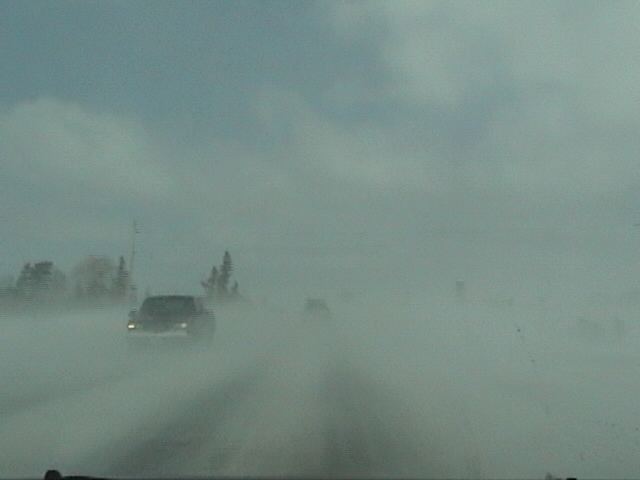 | ||
Ground blizzard refers to a weather condition where loose snow or ice on the ground is lifted and blown by strong winds. The primary difference between a ground blizzard and a regular blizzard is that in a ground blizzard no precipitation is produced at the time, but rather all the precipitation is already present in the form of snow or ice at the surface.
Contents
Meteorological criteria
While the term "ground blizzard" is often associated with intense blowing and drifting snow conditions, there are specific criteria which must be met. Often such criteria will be determined by a country's governing weather agency or other similar body. In the U.S, according to the National Weather Service a blizzard is defined as having sustained winds or frequent gusts of 35 mph or more, visibility frequently below 1/4 mile in considerable snow and/or blowing snow, and the above conditions are expected to prevail for 3 hours or longer. Environment Canada similarly maintains that the temperature must be colder than 0°C, widespread reduction of visibility to less than 1 kilometer due to snow and/or blowing snow and sustained wind speeds or gusts of 40 km/h or more, with all these conditions persisting for at least 4 hours (6 hours for the Northwest Territories and Nunavut)
Types
There are 3 different forms of ground blizzards:
- In horizontal advection conditions, the winds blow across the surface of the earth with very little if any large-scale upward motion.
- In vertical advection conditions, the winds exhibit large-scale upward motion lifting the snow into the atmosphere creating drifting waves of snow up to 500 meters in height.
- In thermal-mechanical mixing conditions, massive convective rolls form in the atmosphere and the blizzard may be observed from space with the blizzards convective rolls creating waves of snow (also known as snow billows) resembling lake or ocean effect snow bands. The extreme conditions can quickly bury a two story home and make breathing very difficult if not impossible if caught outdoors.
Climatology
Ground blizzards occur throughout the world, however unlike other winter storms, topography either aids in their formation or prevention. The most important topographic element in a blizzard is the requirement for a vast amount of large open and relatively flat land. Any type of flora, especially coniferous forms, will catch any drifting snow significantly reducing the blizzards effects. The environment must also support temperatures cold enough to prevent any snow on the ground from melting and bonding the ice crystals together.
Ground blizzards are most common in the Arctic and Antarctic during seasonal transition periods, such as the spring and fall. Ground blizzards are also common in the Canadian Prairies and U.S Midwest as well as Siberia and Northern China.
